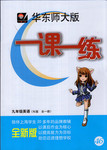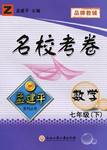题目内容
Money was a constant source of tension and stress when I was growing up. My parents were , well-educated and hard-working, but they lived from paycheck to paycheck. When I was 13, they split up. Then my mom to raise three kids, often relying on free lunch tickets and food stamps. As my mother retirement age, she was filled with over the fact that she hadn’t saved enough for her golden retirement years, she often sighed. My father had always been to work—we had always he’d work less and spend more time with us . But he is just a workaholic(工作狂).
My parents were trying so hard to make ends meet, so I couldn’t become a on them. As a result, I college and spent the next couple of years drifting from one minimum wage job to another. I my broken-down car, went to work on foot, reduced my by sharing a one-bedroom apartment with three other women, and got free food during Happy Hour at our local bar. I learned to do whatever it took to .
One night, while I was working at a donut shop and 34 coffee for a homeless customer, I . that I was one paycheck away from being homeless myself. That was my wake-up . Motivated by fear of an uncertain , I opened the Yellow Pages(电话黄页), . professional dog trainers and negotiated an unpaid apprenticeship(学徒工作). Less than a year later, I was by a dog trainer, and I loved the work. A couple of years later, I started my own dog-training school, which luckily turned out to be . My efforts paid off.
Though I didn’t have rich parents to rely on, I discovered the power of asking for what I want.
1.A. clever B. careful C. greedy D. powerless
2.A. hoped B. struggled C. attempted D. refused
3.A. counted B. imagined C. mentioned D. approached
4.A. curiosity B. disagreement C. anxiety D. happiness
5.A. if B. so C. but D. because
6.A. addicted B. similar C. related D. familiar
7.A. believed B. guessed C. said D. wished
8.A. though B. yet C. instead D. too
9.A. danger B. burden C. challenge D. threat
10.A. dropped out of B. was admitted into C. went in D. went through
11.A. paid for B. cleaned out C. gave away D. fixed up
12.A. clothes B. dinner C. weight D. rent
13.A. survive B. work C. play D. pay
14.A. buying B. making C. tasting D. smelling
15.A. recalled B. promised C. feared D. realized
16.A. sign B. hit C. call D. period
17.A. future B. job C . mood D. family
18.A. searched B. phoned C. invited D. persuaded
19.A. honored B. reminded C. hired D. moved
20.A. hard B. tiring C. efficient D. successful
 华东师大版一课一练系列答案
华东师大版一课一练系列答案 孟建平名校考卷系列答案
孟建平名校考卷系列答案





